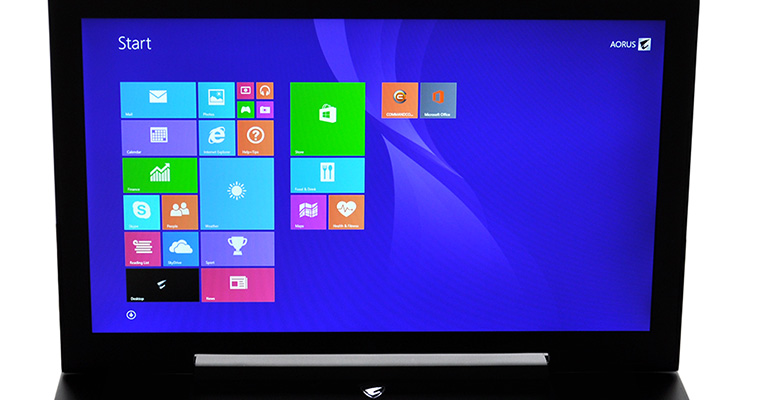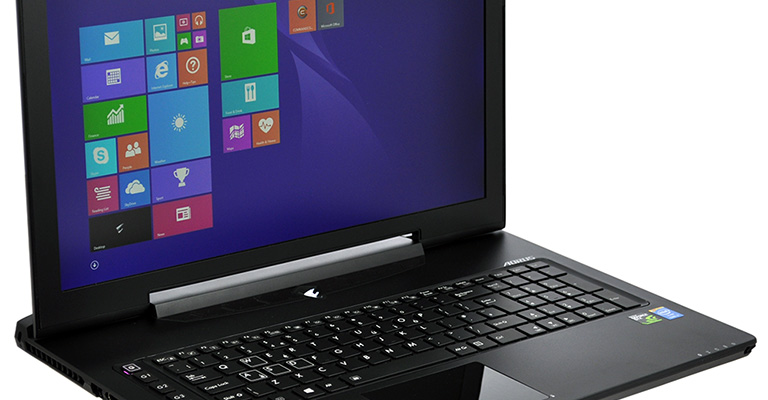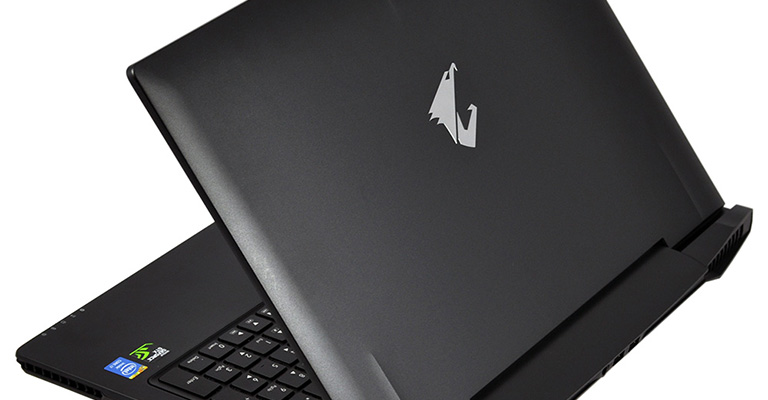Display
Ultra-high-res panels are all the rage right now, and we've already seen MSI pack over 4-million pixels into a 15.6in gaming laptop. Aorus is taking a simpler approach with a full-HD, 17.3in LCD display.
The 1,920x1,080 panel is the same AUO219D model featured in Asus's G750 and it can be described as a competent solution that covers the basics without excelling in any particular area.
A maximum brightness of 300 cd/m2 is ample and above average, yet it's the screen's sheer size and matte coating that makes it enjoyable to use. The Windows desktop is made to feel roomy, multimedia content looks great on a laptop of this size, and the anti-glare coating proves advantageous during outdoor use.
However, while sheer scale is an obvious plus point, there are a couple of downsides, too. Contrast could have been better and viewing angles are modest at best. Unlike premium IPS panels, Aorus's chosen TN display quickly loses composure when the monitor is tilted forward. The horizontal viewing angles are more forgiving, but it's certainly a panel that's best viewed head-on.
Our sample also showed small signs of backlight bleed along the right edge and, for what it's worth, there's no touchscreen option: that's something we'd like to see on more Windows 8 laptops. Could the X7 display have been better? Absolutely, but Aorus has played it safe with an above-average TN panel that, despite lacking in wow factor, will service most users' needs.
Sound and Noise
On the audio front, the X7 has the ability to impress and frustrate in equal measure. The laptop's speaker system is comprised of two underlying subwoofers and a pair of stereo speakers integrated into the front corners. The combination works surprisingly well, with reasonable definition between highs and lows, and there's a decent punch in terms of maximum volume output.
As with most laptops you won't be retiring your dedicated speakers/headphones just yet, but the built-in audio is more than sufficient for gaming or multimedia use. And it is loud enough to fill a small room with ease.
The sound system works well, but what's frustrating is the amount of noise that can be generated by the dual internal fans. Readers should note that the fans are barely audible when the laptop is idle but apply load to either the CPU or GPUs and the fans ramp up dramatically.
Though, perhaps we shouldn't be surprised: dual GTX 765Ms and an eight-thread Intel Core i7 were never going to go quietly into a chassis that's 22.9mm thick. The good news is that the frantic fans do a grand job of expelling heat. The chassis does get warm above the keyboard, but not uncomfortably so, and GPU temperature peaked at an acceptable 71ºC during benchmarks.












